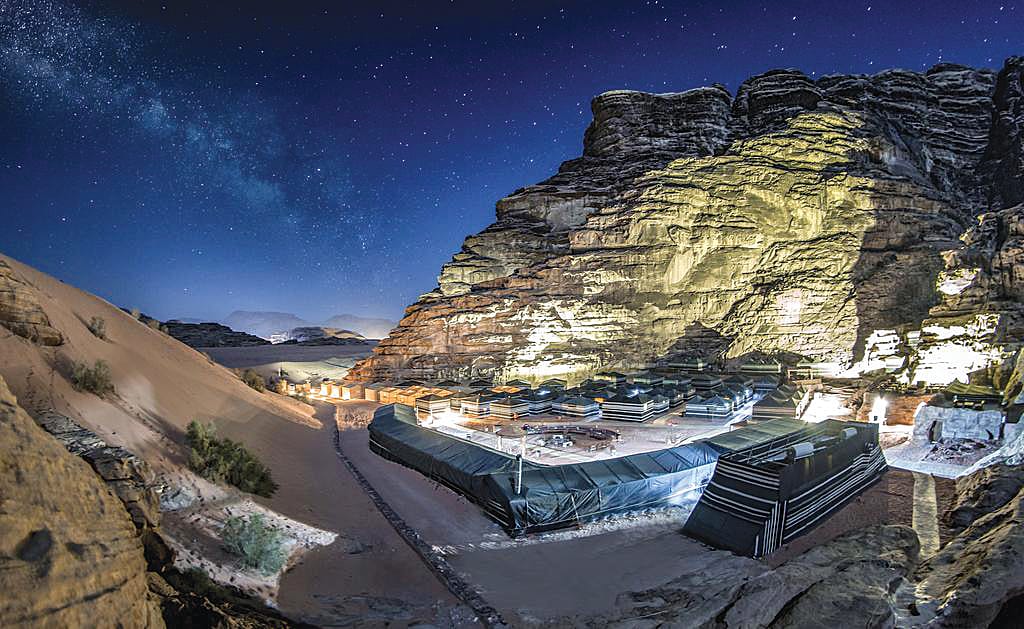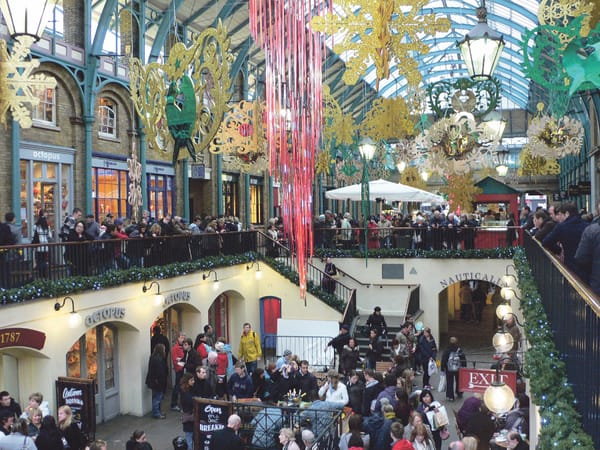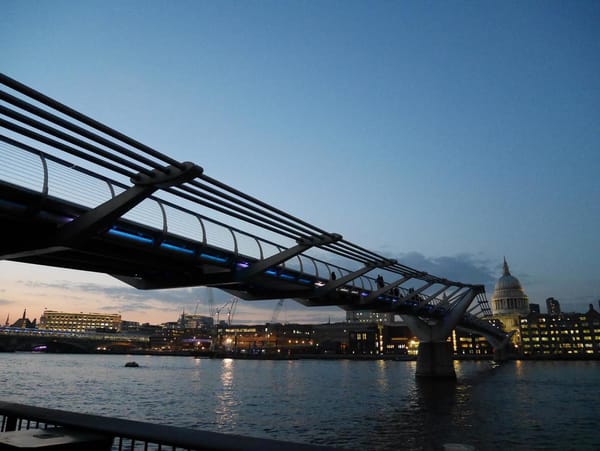When in Rum
Chris Richardson goes full Bedouin in Jordan’s answer to Mars

Wadi Rum, AKA the Valley of the Moon, is Jordan’s largest valley. Not that the size matters much in itself. It’s also Hollywood’s go-to location for all movies Martian, which tells you all you need to know about the kind of landscapes on offer. I was initially dubious about spending several days of a short trip surrounded by endless redness but, in the end, Wadi Rum proved to be nothing short of spectacular.
It’s the perfect place to unwind with a good book or meditate in silence among the stillness. Or, for the more energetically charged, it also offers endless sandstone and granite mountains to scale. And that’s before the sun sets and the stars rise. If you were interning in London over the summer, you’ve probably forgotten what stars look like. Well, I’ll remind you: they’re magical twinkles of hope, a testament to the beauty of the cosmos, and a symbol of both your irrelevance and insignificance, something you probably need reminding of if you’ve been stuck on a trading floor all summer.
“Wadi Rum is Hollywood’s go-to location for all movies Martian, which tells you all you need to know about the kind of landscapes on offer”
The Nabateans, of Petra fame, left their mark in the form of graffiti, rock paintings, and temples. Nowadays, Wadi Rum is home to several communities of Bedouin, nomadic people living across the deserts of North Africa and the Middle East. While some Bedouins have abandoned their nomadic traditions in favour of a more modern lifestyle, many groups have retained their traditional practices of tent knitting, arts and crafts, and clan structures. Many such groups are very much open to outsiders, who often act as a main source of income.

One of the issues faced by Bedouin communities is the complete erosion of traditions in favour of western comforts, a process facilitated by certain types of tourism. New fancy desert camps are emerging all the time, tending towards ugly, self-contained ‘pods’ in place of traditional tents. Such camps threaten to displace local people and ruin the pristine landscapes. Meanwhile, excessive around-the-clock air conditioning within the pods contributes to the climate change. Thankfully, some camps are refusing to abandon traditions by offering an authentic Bedouin experience instead of luxury, one that respects local indigenous history and culture. That’s not to say that there’s a sacrifice in comfort or quality: the more traditional camps are perfectly pleasant and suitable for both backpackers and families alike.
“The food is fantastic, and includes the zarb, a Bedouin banquet of chicken and lamb, slow-cooked beneath the sand”
One standout camp is Rahayeb Desert Camp, whose simple quarters, found in a peaceful location within the protected area, offer a true escape from the chaos of the newer camps. The staff are friendly and knowledgeable, and provide support in organising camels, jeeps, sandboarding, and other activities in the area. The food selection is fantastic and includes the zarb, a Bedouin banquet of chicken and lamb, slow-cooked beneath the sand. This is by far the best base from which to explore the surrounding area.
Finally, no trip to Wadi Rum would be complete without escaping the Martian rock immersion to appreciate its true magnitude from 4,000 feet. In fact, the Royal Aero Sports Club of Jordan was founded by King Abdullah after discovering the thrill of flying and seeing the beauty of the country from above. This non-profit organisation now offers activities, such as hot air balloon rides, from which you can really appreciate the magnificence of the area. The panoramic views are out of this world and not to be missed.
For more information visit rahayebdc.com, rascj.com, or contact the Editor.









